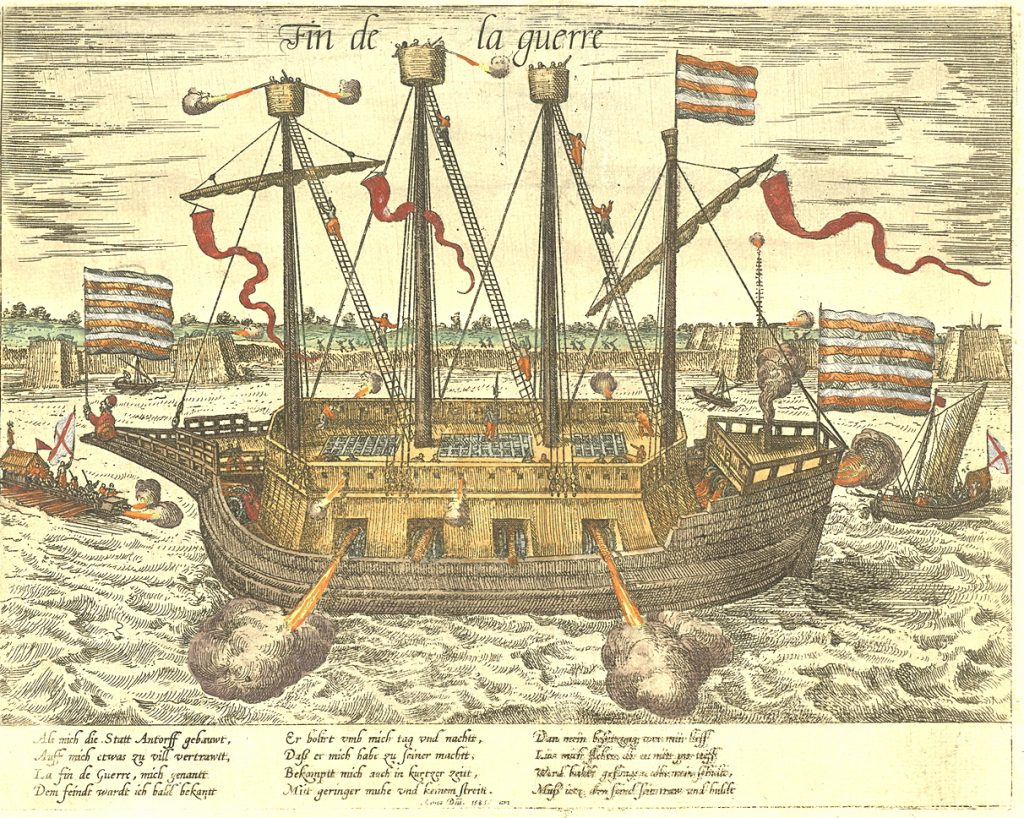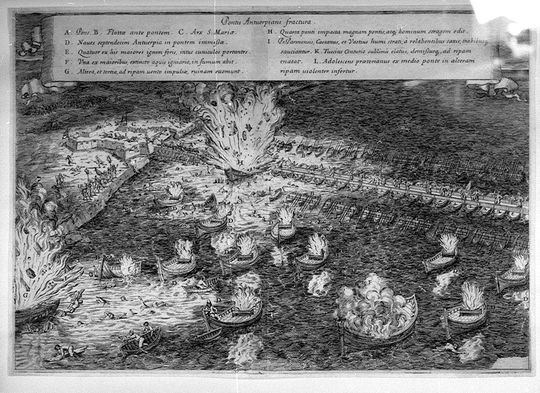Open to all ages.
The Task: Draw a weapon deployed by Dutch defenders of Antwerp against Spanish besiegers in 1585. There is no image of this vessel, although there is a description from a primary source published by F. Strada in the eighteenth century. It is a ship with no sails on deck, but an underwater mast and sail that allowed it to be propelled by the tide of the River Sheldt to the besiegers’ bridge of boats spanning the entire river. According to Strada the Dutch built two: one ship had hooks to tear the boat bridge apart; the other had 4,000 pounds of explosives. Both ships hit the bridge, so the innovative design worked. They just weren’t big enough to win the war for Antwerp. Please e-mail your drawing to Loretta@lorettagoldberg.com.
The Judge: I am thrilled that retired Navy Seal officer and teacher of military history, R.L. Crossland, who is also an award-winning author, has agreed to be the judge.
What you’ll win: a free signed paperback of The Reversible Mask if you are in the US, a PDF if outside. In all cases you’ll also receive a fantasy map titled Edward Latham’s World that I commissioned from Italian map maker, Maria Gandolfo, for the book launch. With your permission, I will publish your drawing on my blog and incorporate it into my slide show, with credit to you.
See my blog of January 29, 2019, for background on innovations by the Dutch defending Antwerp.
“They are perpetually proving their obstinacy and pertinacity by their industrious genius and the machines which they devise. Every day we are expecting some new invention…our merely human intellect is not competent to penetrate the designs of their diabolical genius.”
This sounds like the desperate complaint of a losing general. But it came from Spanish commander, Alexander Farnese, Duke of Parma, who defeated Antwerp in the end. Here are two Dutch innovations that preceded the ship with an underwater sail and messed with Spanish minds.


I thrust Edward Latham at the siege twice. He learns that the Dutch aren’t good at basics—they refuse to flood the surrounds while they had time, and have no secure communication with allies who could take advantage of temporary military successes to break the siege—but they are inventive. He sees the giant ship War’s End, many times bigger than any other vessel, an artillery platform the Dutch hoped to float with corks and annihilate the Spaniards. It grounds on a sandbar. However, even to design and build it horrifies their enemy. This invention by engineer Federigo Giambelli does work. It is the first ship bomb detonated by a clock at a pre-set time (crew not necessary), attached to a flint that fires a wick that blows up 7,000 pounds of explosives and flesh-shredding metal or stone contained by a pyramid-shaped cone that forced the blast sideways rather than up. Loss of life is devastating, 1,000 in an instant. Latham is on the bank of the River Scheldt when it explodes. (image of Hellburners) It breaches the bridge, but the Antwerp defenders don’t check for a couple of days, so the Spaniards are able to make rudimentary repairs. Antwerp eventually surrenders, but the dreaded Hellburners take on mythic status in Spanish minds, contributing to the defeat of the Spanish Armada in 1585, when Spanish captains decide that mere fire ships the English send toward them are Giambelli’s diabolical machines.
I look forward to your imagining of the ship with the underwater sail.
